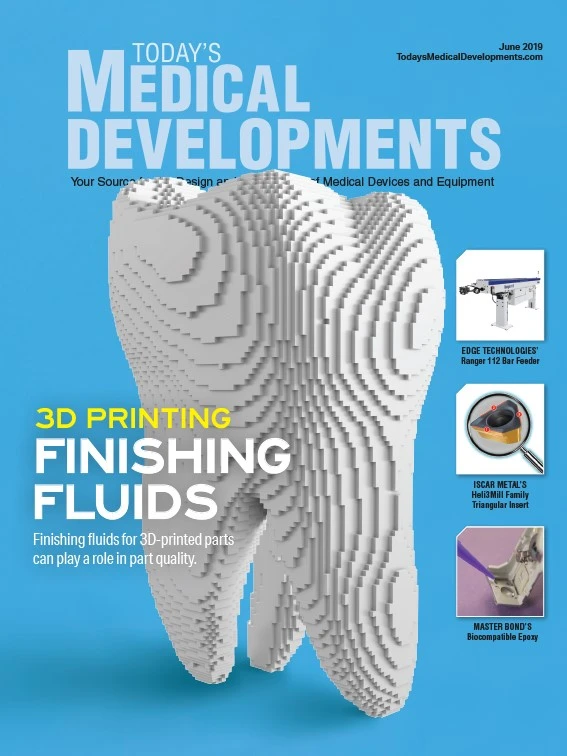
Global demand for manufacturing robotics and automation continues to climb as shops look for ways to increase productivity, precision, and efficiency in the face of skilled labor shortages and a growing trend toward high-mix, low-volume production. For shops with grinding equipment, installing an automation system on one machine can increase productivity by as much as 33% per shift and reduce additional manpower needs by 13%.
Automation technology must match the types of grinding machines that shops use. Cylindrical and tool-grinding machines, for instance, require an uninterrupted supply of workpieces without slowing or stopping grinding to load or unload. In the past, such automation involved large capital outlays for hardware and custom software, but new standardized options fulfill today’s requirements and budgets.
More shops are integrating automation systems on their own or relying on their grinding machine original equipment manufacturers (OEMs) to perform the task. OEM-designed automation systems integrated directly into grinding machines offer the advantages of technology created, installed, and warranteed for each piece of grinding equipment. United Grinding recently established an in-house automation systems department to focus on integration. That department’s understanding of how customers want to implement automation on cylindrical and tool-grinding machines also propelled the design of flexLoad, a standard, fully integrated and commercially available loading system. The integrated loader takes on tedious, repetitive, manual tasks, freeing employees for other responsibilities.

Most shops expect automation to provide short cycle times, allow parts to be removed for inspection and separate the rejects without interrupting the machine or altering its internal working temperature. The flexLoad system maintains a load/unload cycle time of 6 seconds and can include statistical process control (SPC) for parts inspection and reject handling. An operator can open three completed-parts drawers while the grinding machine runs at full speed.
Automation systems offer several value- added options to increase flexibility, but many shops only need specific additions to standard feature sets. For example, in-use chucks and tooling must stay free of coolant, so the flexLoad system can be equipped with an air nozzle on its robot to clear off coolants. For gaging and tracking parts, barcode scanning records data without increasing cycle time unduly.
Automated equipment must run continuously and quickly, preserving workplace safety while maintaining production pace. Full-system enclosures, for instance, offer worker protection, but front-door access on a grinding machine slows cycle times. The approach for flexLoad was incorporating a flanged side door between the machine and the robot that won’t open without an explicit request-for-entry signal from the operator. Compared to front-door access, the flexLoad design cuts 6 seconds to 8 seconds from overall cycle time.

Because ID and OD cylindrical machines are set up as mirror images of each other, OEMs must build separate versions of their integrated systems to accommodate both types of equipment. This involves creating a completely different system optimized for a process-specific machine. After creating an OD version of the flexLoad, engineers fine-tuned ID implementation that fit on the left side of the machine instead of the right. OEM implementations such as flexLoad can optimize integrated standard loaders.
Even well-designed equipment needs routine maintenance, and integrated systems can make parts easily accessible without aftermarket alteration of the grinding machines. To make flexLoad pneumatics simple to service, the system a is designed with a single panel access point.
The most valuable aspect of an automation system is its flexibility and adaptability. OEMs who research customer needs and implement features to address relevant requirements can produce automation systems that offer significant value. flexLoad was developed so shops could change end-of-arm tooling, making diverse types of parts in high-mix, low-volume scenarios. Although United Grinding automation solutions can design custom systems for any of the company’s eight machine brands, it built the standard flexLoad system for many Studer OD and ID grinding machines, along with plans to create standardized systems for the company’s other brands.
United Grinding
https://www.grinding.com
Get curated news on YOUR industry.
Enter your email to receive our newsletters.
Explore the June 2019 Issue
Check out more from this issue and find your next story to read.
Latest from Today's Medical Developments
- Siemens accelerates path toward AI-driven industries through innovation and partnerships
- REGO-FIX’s ForceMaster and powRgrip product lines
- Roundup of some news hires around the manufacturing industry
- Mazak’s INTEGREX j-Series NEO Machines
- The Association for Advancing Automation (A3) releases vision for a U.S. national robotics strategy
- Mitutoyo America’s SJ-220 Surftest
- #56 - Manufacturing Matters - How Robotics and Automation are Transforming Manufacturing
- STUDER looks back on a solid 2024 financial year






